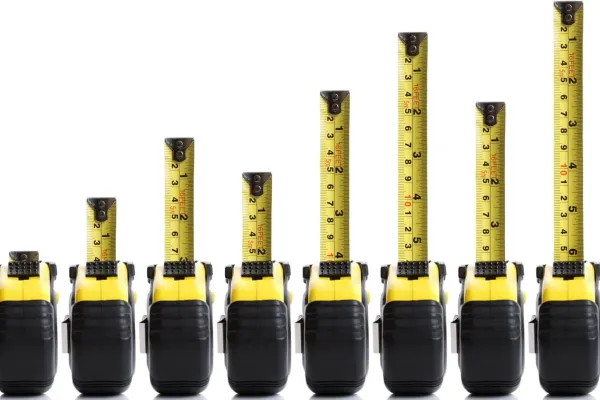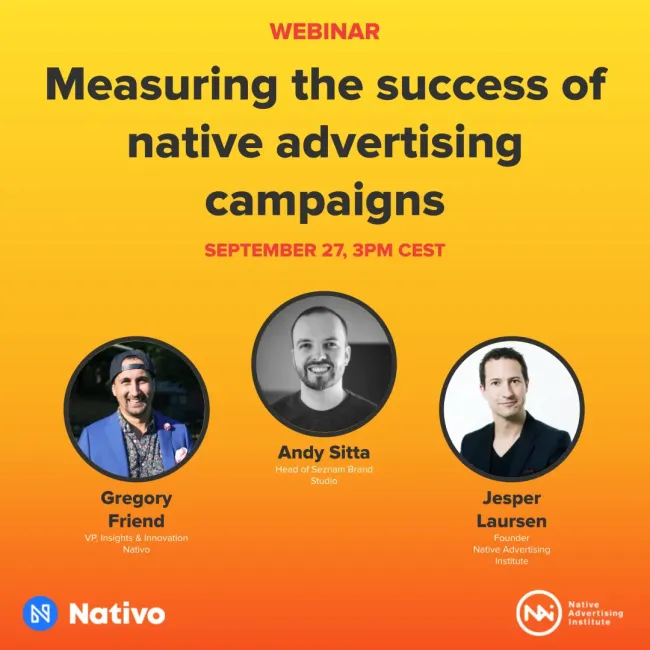
 Details
Details
When it comes to measuring the success of a native advertising campaign, people often don’t understand the metrics they’re using and sometimes even choose to look at the wrong ones. On top of that, metrics differ across platforms.
Which begs the question: is it even still relevant to measure the success of your native advertising campaigns? And how do you do it accurately?
Andy Sitta, the head of Seznam Brand Studio in the Czech Republic, believes evaluating a campaign’s success through metrics is still relevant – crucial in fact – but only if done correctly.
Know your metrics
There are two steps you should consider when using metrics to assess the success of your campaigns, Sitta says. The first is knowing the metric you are employing – how is it defined and how does it differ across platforms?
The second step is knowing how to use the metric. What’s the context in which you are employing the metric, what’s it best used for and when should you not use it?
The age-old adage “quality over quantity” applies just as much to assessing the success of your campaign as your ad content. It’s not a matter of volume but of value, Sitta emphasises. The view-through rate on an ad, for example, might be 45.6 percent – suggesting people love the ad! But the volume of views does not actually reflect the attention paid to it. It can generally be said, warns Sitta, there are likely many more “skippers” than “heavy” views.
So how do we measure success?
According to Sitta, Seznam Brand Studio measures the impact of its brand-building campaigns through a one-click survey that takes place before and after the campaign and includes at least 2,000 respondents.

What’s the most accurate metric?
Determining which metric is the most accurate will depend on the brand. For smaller brands, it’s important that the native advertiser ensures it has the hearts and minds of the people in its brand awareness. But for bigger brands, it's more about brand association and ensuring that the brand is really present.
In Sitta’s opinion, top-of-mind awareness is one of the most important metrics for brands of any size.
“If you are thirsty, what is the first brand that comes into your mind? If you are the first, if you are top of mind, that’s it – that’s the goal,” he says.
How should metrics be used in campaigns?
When measuring the success of a campaign, it’s crucial that you focus on just one metric. If you start adding more metrics, you lose focus. When you use multiple metrics, some may well end up contradicting each other, making it impossible to learn what’s right or wrong.
For example, you may have a good view duration, but a high bounce rate or a lower scroll depth. Sitta says that focusing solely on one clear metric will allow you to see whether or not your audience is actually reading or viewing your native ad to the end.
What metrics should you avoid?
There are metrics that are built to measure one criterion, but end up measuring another. Take view-through rate, for example.
The video completion rate can measure how many people actually viewed the entire video, but that doesn’t necessarily mean that they paid attention. As Sitta points out, the video could have just as easily been playing in the background.
If you can’t really know if the video garnered actual attention, VTR becomes a much less valuable metric.
Sitta’s takeaway advice for native advertisers is to remain focused on your primary metric and to always be wary of the shortcomings of certain metrics when measuring the success of their campaigns.
“[Sometimes] there is a metric that is built to measure something but in the end, it measures something else,” he says. “I think you should just have one clear metric and then you can see if you are getting to the end [of your goals] or not.”





